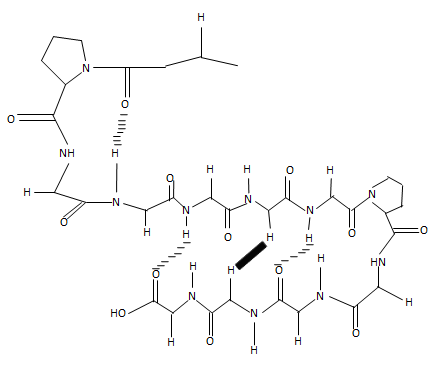"All I remember is coming out of treatment not being able to hear anything," said Bryce, now a healthy 14-year-old living in Arizona. "I asked my mom, 'Why have all the people stopped talking?'" He was 90 percent deaf.
"The loss has been devastating," said his father, Bart Faber. "But not as devastating as losing him would have been."
Treatment with aminoglycosides, the most commonly used class of antibiotics worldwide, is often a lifesaving necessity. But an estimated 20-60 percent of all patients who receive these antibiotics suffer partial or complete hearing loss.
Now, in a study that will be published online Jan. 2 in the Journal of Clinical Investigation, researchers at the Stanford University School of Medicine report that they have developed a modified version of an aminoglycoside that works effectively in mice without the risk of causing deafness or kidney damage, another common side effect.
The researchers hope to test versions of the modified antibiotic in humans as soon as possible.
"If we can eventually prevent people from going deaf from taking these antibiotics, in my mind, we will have been successful," said Anthony Ricci, PhD, professor of otolaryngology-head and neck surgery and co-senior author of the study. "Our goal is to replace the existing aminoglycosides with ones that aren't toxic."
Four years in the making
It took the scientists four years of research to produce 5 grams of the newly patented antibiotic, N1MS, which is derived from sisomicin, a type of aminoglycoside.
N1MS cured urinary tract infection in mice just as well as sisomcicin, but did not cause deafness, study results show. The study presents a promising new approach to generating a new class of novel, nontoxic antibiotics, Ricci said.
The two senior authors -- Ricci and Alan Cheng, MD, associate professor of otolaryngology-head and neck surgery -- joined forces in 2007 to explore the idea of creating new and improved versions of these antibiotics based on a simple yet groundbreaking idea born of Ricci's basic science research into the biophysics of how hearing works within the inner ear.
"It's a nice example of how basic science research is directly translatable into clinical applications," said Ricci.
Ricci is an expert on the process by which sound waves open ion channels within the sensory hair cells of the inner ear, allowing their conversion to electrical signals that eventually reach the brain.
Because aminoglycosides cause deafness by killing these nonregenerating hair cells, Ricci postulated, why not simply make the drug molecules unable to enter the cells' channels?
The idea made sense to Cheng.
"As a clinician-scientist, I treat kids with hearing loss," Cheng said. "When a drug causes hearing loss it is devastating, and it's especially disturbing when this happens to a young child as they rely on hearing to acquire speech.
"When I came to Stanford seven years ago from the University of Washington, I was exploring the angle that maybe we could add drugs to protect the ear from toxicity. Tony brought up this new idea: Why don't we just not let the drug get in? Great idea, I thought. When do we start to work?"
A potent antibiotic
For 20 years, and despite newer, alternative antibiotics, aminoglycosides have remained the mainstay treatment worldwide for many bacterial diseases, including pneumonia, peritonitis and sepsis. They also are often used when other antibiotics have failed to treat infections of unknown origins.
Their popularity is due, in part, to their low cost, lack of need for refrigeration and effectiveness at treating bacterial infections at a time when the declining potency of antibiotics is a major public health concern. They are frequently used in neonatal intensive care units to battle infections, or even the threat of infections, which pose a life-threatening risk for babies. Exactly how many premature babies suffer hearing loss as a side effect of treatment with the drug is unknown, Ricci said.
"The toxicity of these drugs is something we accept as a necessary evil," said Daria Mochly-Rosen, PhD, director of SPARK, a program at Stanford that assists scientists in moving their discoveries from bench to bedside.
Ref : http://dx.doi.org/10.1172/JCI77424


